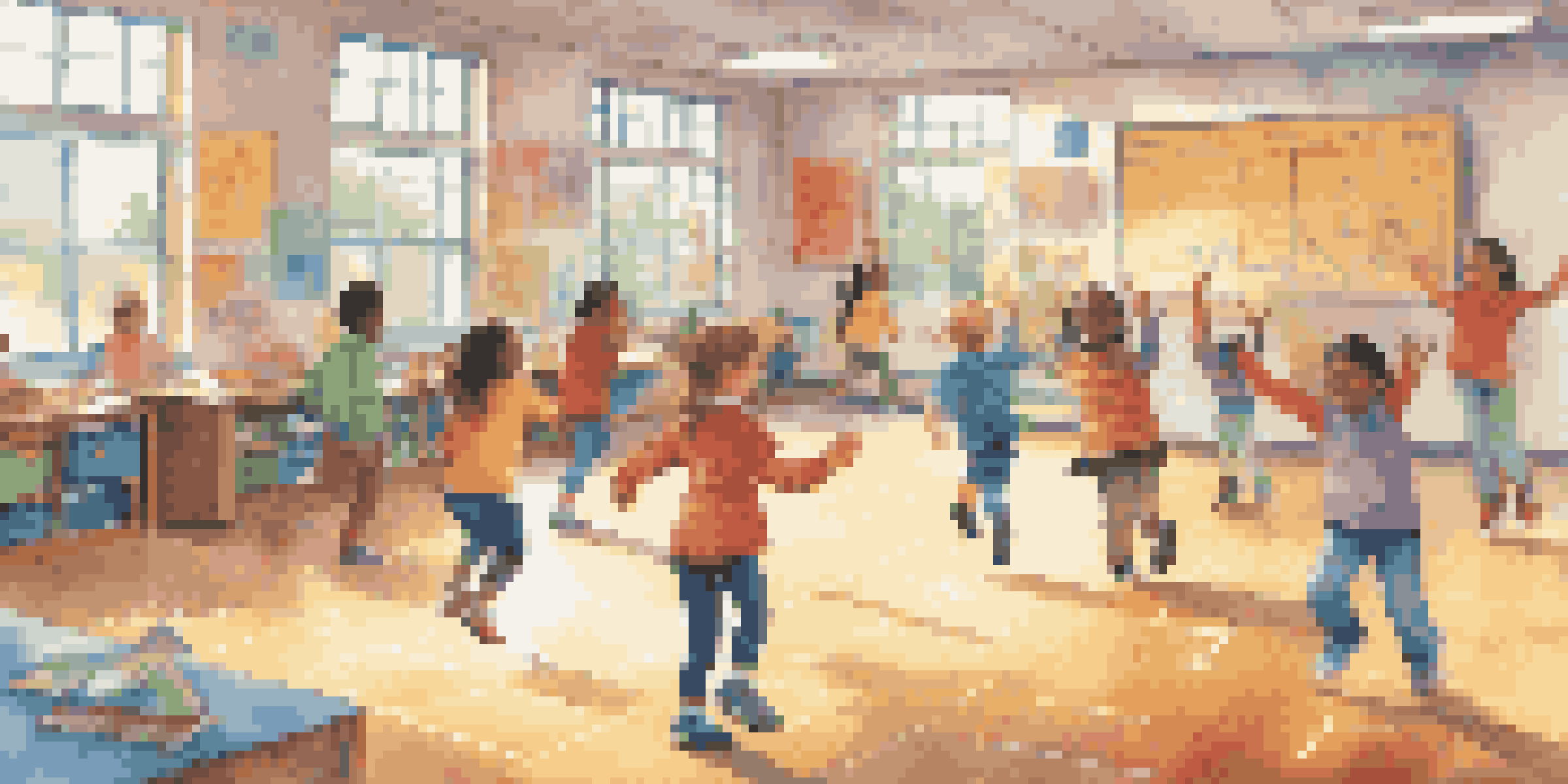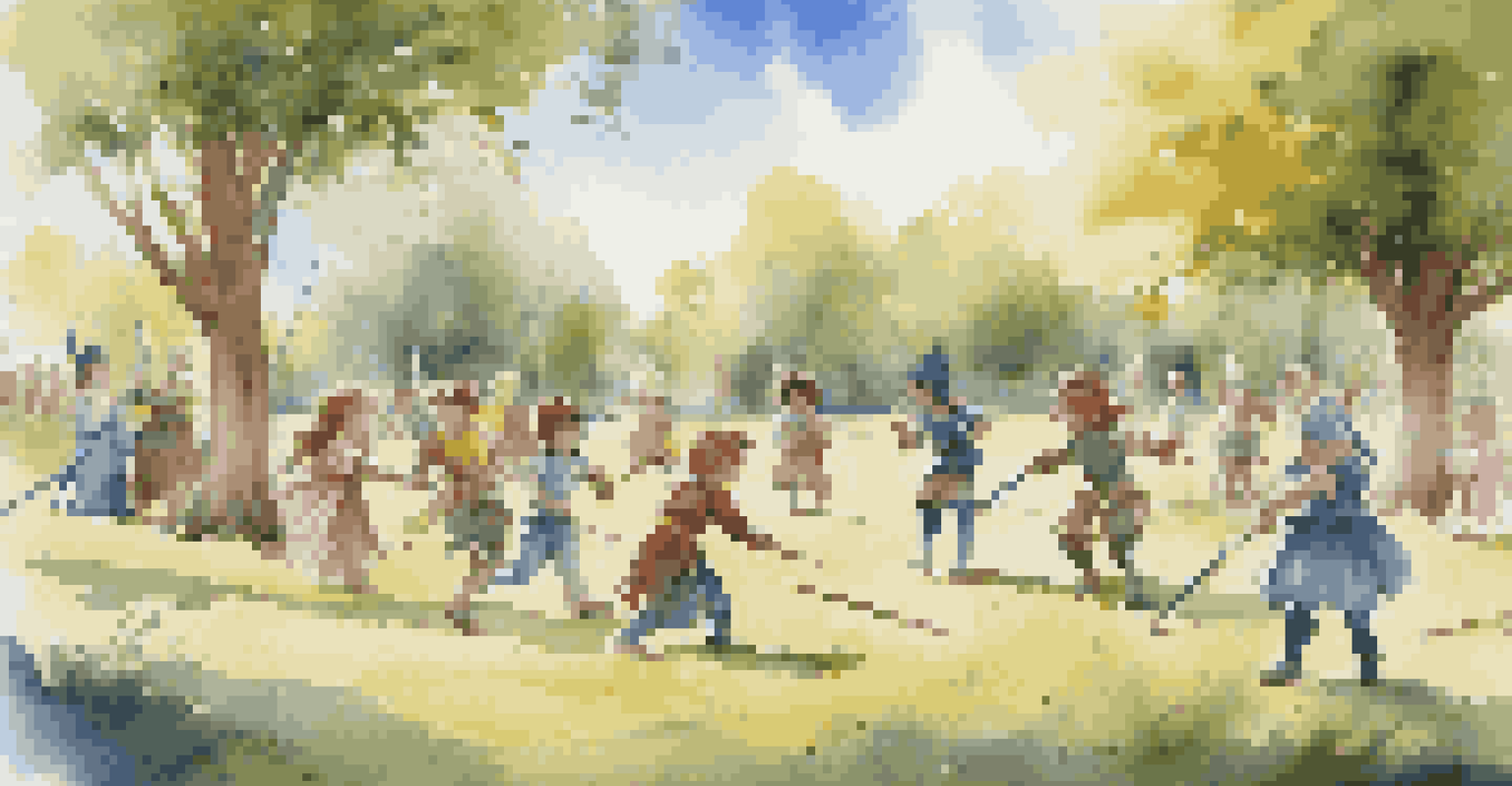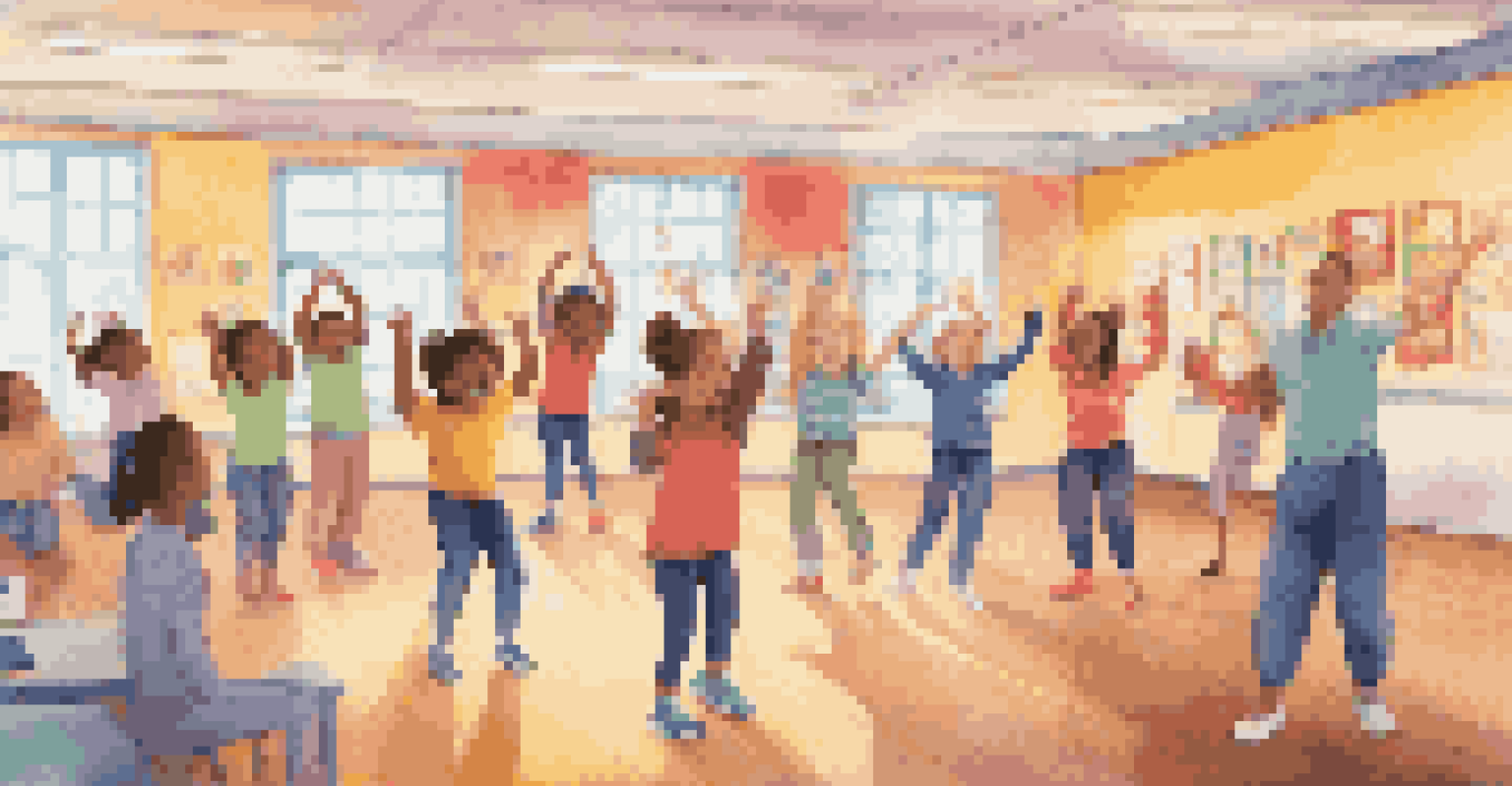Integrating Movement and Play to Enhance Learning Engagement

The Importance of Movement in Learning Environments
Movement is not just a physical activity; it plays a crucial role in cognitive development. When students engage in physical activities, their brains receive increased oxygen and blood flow, improving focus and retention of information. Think of it like charging a battery; the more active a student is, the more energy their brain has to learn.
Play is the highest form of research.
Incorporating movement into learning environments can lead to higher levels of engagement. For instance, when students are allowed to stand, stretch, or even move around while learning, they often become more attentive and involved. This dynamic approach shifts the focus from passive absorption to active participation.
Research has shown that students who engage in regular physical activity tend to perform better academically. By integrating movement with traditional learning methods, educators can create a more stimulating atmosphere that fosters curiosity and a love for learning.
How Playful Learning Enhances Engagement
Play is a natural way for children to explore the world, and it can significantly enhance learning. When students are encouraged to play, whether through games or creative activities, they become more engaged and motivated to learn. Play turns lessons into experiences rather than mere information to memorize.

For example, using role-playing games can help students grasp complex subjects like history or science. Instead of just reading about historical events, they can act them out, leading to deeper understanding and retention. This hands-on approach makes learning more relatable and enjoyable.
Movement Boosts Learning and Focus
Engaging in physical activities enhances cognitive development and improves students' focus and information retention.
Moreover, playful learning encourages collaboration among students. When they work together in a game or activity, they develop social skills and learn the value of teamwork, all while reinforcing the lesson at hand. This interactive environment is key to keeping students interested and involved.
Combining Movement and Play for Effective Learning
The integration of movement and play creates a powerful learning experience. Imagine a classroom where students learn math through a hopscotch game or explore geography by physically moving to different locations in the room. This combination makes abstract concepts tangible and memorable.
Movement is a medicine for creating change in a person's physical, emotional, and mental states.
By designing activities that incorporate both movement and play, educators can appeal to various learning styles. Kinesthetic learners thrive in environments where they can move, while visual and auditory learners benefit from the engaging nature of play. This holistic approach ensures that all students have the opportunity to excel.
Additionally, combining movement and play helps to reduce stress and anxiety among students. When they enjoy the learning process, they are more likely to participate actively and express their thoughts freely. This creates a positive feedback loop where engagement leads to better performance.
Practical Ways to Integrate Movement into Lessons
Integrating movement into lessons doesn’t have to be complicated. Simple strategies such as 'brain breaks'—short breaks where students can stretch, dance, or do simple exercises—can significantly boost focus. These moments of physical activity can refresh the mind and prepare students for the next learning task.
Another effective strategy is to use learning stations that require movement. For example, setting up different areas in the classroom for various subjects can encourage students to move around as they switch tasks. This not only keeps them active but also breaks the monotony of sitting still for long periods.
Play Makes Learning Engaging
Incorporating playful learning transforms lessons into interactive experiences, fostering deeper understanding and motivation among students.
Moreover, incorporating technology like fitness trackers or interactive apps can make movement a fun part of learning. Gamifying physical activity encourages students to participate willingly, fostering a love for both movement and education.
The Role of Educators in Promoting Active Learning
Educators play a vital role in promoting active learning through movement and play. By modeling enthusiasm for physical activity, teachers can inspire their students to embrace a more active lifestyle. Their passion can be contagious, leading students to view movement as a valuable part of their learning journey.
Additionally, educators can create a supportive environment that encourages exploration and creativity. By allowing students to suggest their ideas for movement-based learning activities, teachers can foster a sense of ownership and investment in their education.
Finally, continuous professional development in integrating movement and play into the curriculum is essential for educators. Workshops, training, and shared experiences can equip teachers with the tools and knowledge to implement these strategies successfully.
Challenges in Implementing Movement and Play in Learning
While integrating movement and play into learning is beneficial, it does come with challenges. One common issue is limited space in classrooms, which can restrict physical activities. However, creative thinking can help educators adapt lessons to fit smaller areas without sacrificing engagement.
Another challenge might be resistance from parents or administrators who believe that traditional methods are more effective. Educators need to communicate the benefits of active learning clearly, supported by research and successful case studies, to gain buy-in from all stakeholders.
Combining Movement and Play Works
Integrating movement with play creates a dynamic learning environment that caters to diverse learning styles and reduces student stress.
Finally, time constraints can make it difficult to incorporate movement and play into already packed curriculums. However, even short bursts of activity can make a significant difference. Finding ways to integrate these elements into existing lesson plans can help overcome this barrier.
Measuring the Impact of Movement and Play on Learning
Measuring the impact of integrating movement and play into learning is essential for ongoing improvement. Educators can use observation and feedback from students to gauge engagement levels and learning outcomes. Surveys and informal discussions can provide valuable insights into how these strategies affect student experiences.
Academic performance data can also serve as a key indicator. By tracking grades and test scores before and after implementing movement-based activities, educators can assess whether these approaches lead to improved learning outcomes. This quantitative data can bolster the case for active learning in schools.

Moreover, success stories and testimonials from students can highlight the positive effects of movement and play. When students share their experiences, it inspires others and reinforces the value of these innovative teaching methods, creating a ripple effect throughout the educational community.